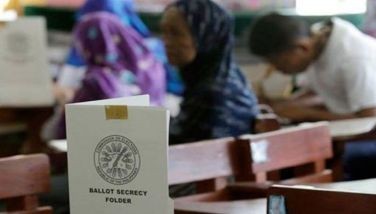BSP: OFW remittances increased in April
MANILA, Philippines - Money from Filipinos abroad bounced back in April, accelerating from a four-year growth slump the previous month to hit $1.804 billion, the Bangko Sentral ng Pilipinas (BSP) said yesterday.
The month’s figure represented cash remittances coursed through banks which grew 6.1 percent year-on-year, preliminary figures showed.
April’s growth rate was a recovery from a dismal three-percent expansion in March, the slowest in four years.
From January to April, cash remittances already went up 5.7 percent to $6.916 billion, above the BSP’s five-percent growth forecast for the year.
A separate gauge called personal remittances – which take into account hand carry money transfers – expanded at a faster pace of seven percent in April and 6.4 percent for the first four months.
In a statement, BSP Governor Amando Tetangco Jr. said the steady flow of remittances was due to the continued expansion of bank and non-bank services abroad that helped capture more of the remittance market.
“Remittances remained robust on the back of sustained demand for skilled Filipino manpower in various countries worldwide,†he said.
Data from the Philippine Overseas Employment Administration (POEA) showed a total of 367,738 workers were processed from January to May this year, 30 percent of whom are covered contracts for service, production and professional personnel.
They are due to be deployed to countries like Saudi Arabia, the United Arab Emirates, Taiwan, Kuwait, Qatar and Hong Kong, BSP said citing POEA figures.
By country, the BSP said bulk of the remittances, accounting for 75.9 percent of the total, came from the US, Saudi Arabia, Canada, the United Kingdom, the United Arab Emirates, Singapore and Japan.
Money from seafarers grew faster than that from land-based workers, BSP said.
The former expanded 9.3 percent, while the latter went up 4.6 percent.
Absolute amounts of money sent home by each segment were not immediately available.
Remittances contribute to the country’s balance of payments (BOP), which measures our capacity to meet trade obligations and settle external debts.
The BOP has steadily been on a surplus since 2005, indicating more than enough resources to cushion outflows, especially now with the volatility in the financial markets.
- Latest
- Trending































